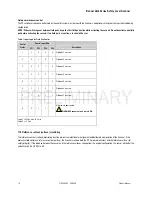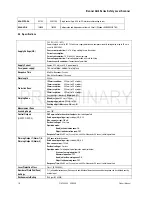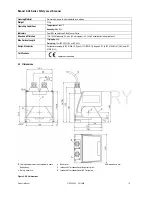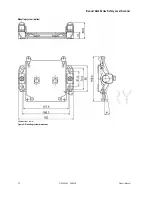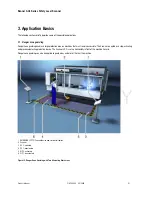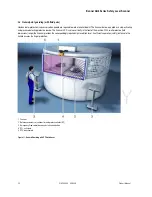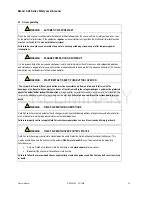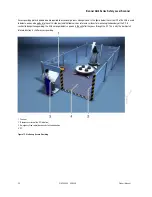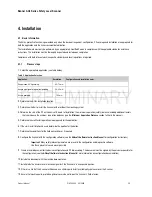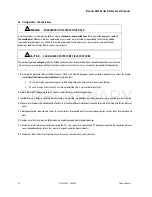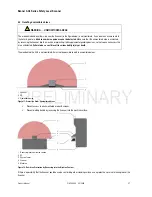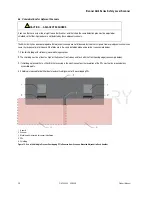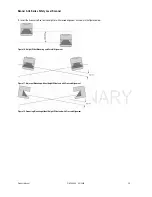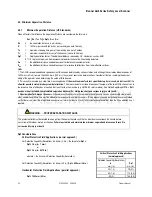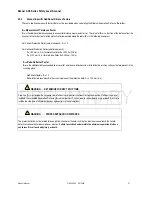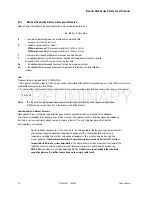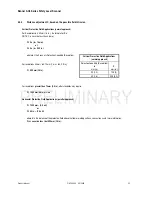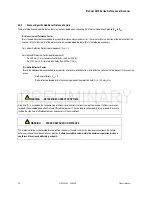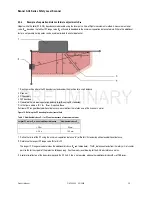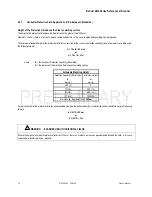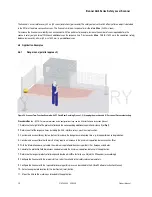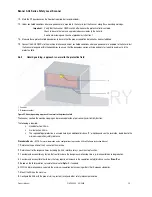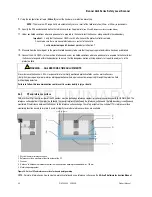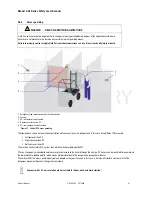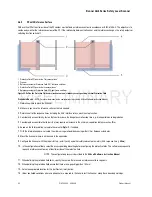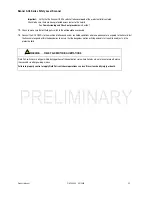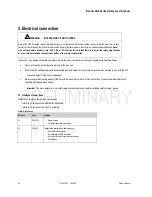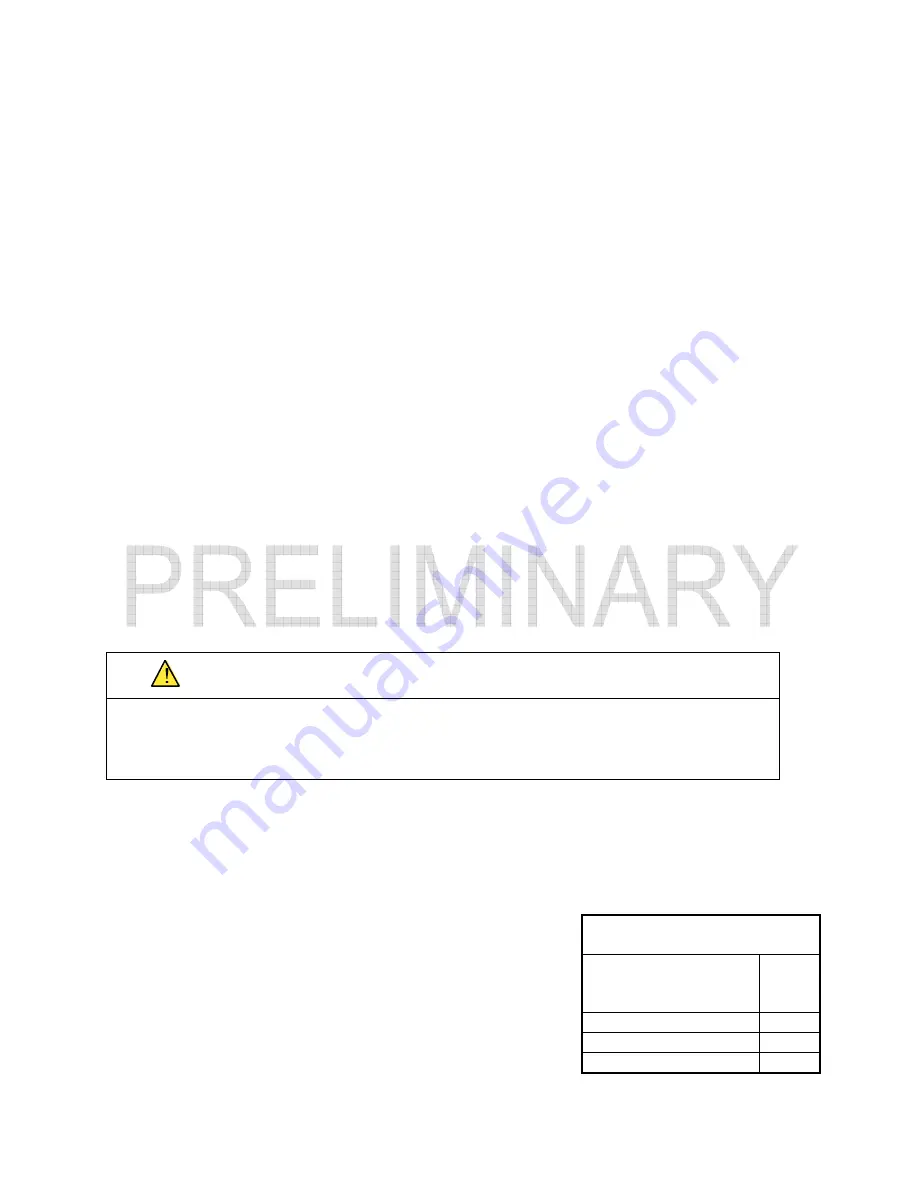
Banner AG4 Series Safety Laser Scanner
4.5
Minimum Separation Distance
4.5.1
Minimum Separation Distance (US Standards)
When all factors that influence the Separation Distance are considered, the formula is:
Ds = [K x (Ts + Tr)] + Dpf + Z
sm
+ Z
refl
Ds
=
the separation distance, in mm (inches);
K
=
1600 mm per second (63 inches per second) (see note 1 below)
Ts
=
maximum stopping time (sec) of the machine (see note 2 below)
Tr
=
maximum response time (sec) of the Scanner (see note 3 below)
Dpf
=
Depth penetration factor: The additional distance required by U.S. standards, such as ANSI
B11.19, to prevent a person from encroaching towards the hazard without being detected.
Z
sm
=
the additional distance needed to account for distance measurement error.
Z
refl
=
the additional distance needed to account for error due to reflections from retro reflective surfaces.
Notes
1. The OSHA-recommended hand speed constant
K
has been determined by various studies, and although these studies indicate speeds of
1600 mm/s (63 in/s) to more than 2540 mm/s (100 in/s), they are not conclusive determinations. Consider all factors, including the physical
ability of the operator, when determining the value of
K
to be used.
2.
Ts
is usually measured by a stop-time measuring device.
If the machine manufacturer’s specified stop time is used, add at least 20% to
allow for possible clutch/ brake system deterioration.
This measurement must take into account the slower of the two MPCE channels, and
the response time of all devices or controls that react to stop the machine (e.g. UM-FA-9A safety module). See Notice Regarding MPCEs.
If all
devices are not included, the calculated separation distance (Ds) will be too short and serious injury could result.
3.
Consideration for Adjacent Scanners.
When adjacent Scanner share the same detection plane and have an unobstructed view of each
other, an additional 40ms time must be added to the response times of both scanners. If the adjacent scanners’ detection planes are shielded
so that there is no clear line of sight between sensors or there is at least a 4 inch (100mm) detection plane offset, then the 40ms addition is not
required.
WARNING . . . PROPER SEPARATION DISTANCE
The protective field must be located far enough from the nearest hazard such that an individual cannot reach the hazard before
cessation of hazardous motion or situation.
Failure to establish and maintain the minimum separation distance could result in
serious bodily injury or death.
Dpf Considerations
Vertical Protective Field Applications (normal approach)
For Detection Capability (Resolution) d ≤ 64mm (2.5 in.), the formula for
Dpf
is:
Dpf = 3.4 x (d – 7 mm)
or
Dpf = 3.4 x (d - 0.275 in.)
Vertical Protective Field Applications
(normal approach)
Detection Capability (Resolution)
d
mm (in.)
Dpf
mm (in.)
30 (1.2)
78 (3.1)
40 (1.6)
112 (4.5)
50 (2)
146 (5.9)
where
d
= the Scanner’s Detection Capability (Resolution)
For Detection Capability (Resolution) d > 64mm (2.5 in.),
Dpf
is
900 mm (36 in.)
Horizontal Protective Field Applications (parallel approach)
Dpf = 1200 mm (48 in.)
30
P/N 144924 05/2009
Product Manual

